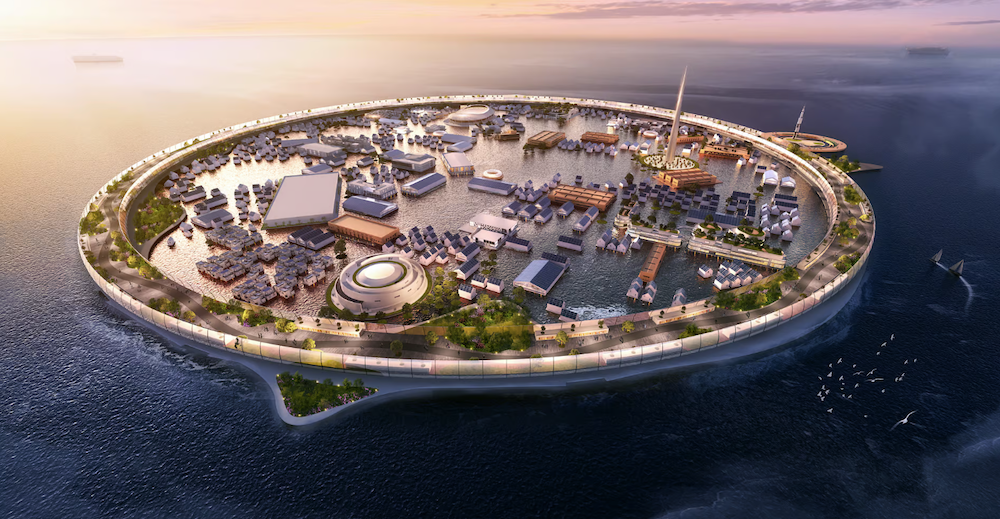
Artificial islands have captivated human imagination and engineering prowess for centuries, standing as testaments to our ability to reshape the natural world.
These marvels of human ingenuity not only showcase our architectural and engineering feats but also reflect our cultural, economic, and environmental aspirations.
The creation of artificial islands spans a broad spectrum of purposes, from expanding urban landscapes to creating luxurious getaways, and from bolstering defensive positions to enhancing environmental conservation efforts.
The fascination with these engineered lands stems from the sheer audacity to challenge nature’s boundaries and the innovative solutions that turn aquatic expanses into habitable and functional spaces.
Artificial islands are a unique intersection of human ambition, technological advancement, and sometimes, the necessity to adapt to changing environments or to expand limited land resources.
As we embark on a journey to explore the 12 Most Incredible Artificial Islands in the World, we’ll delve into the stories behind their creation, the challenges overcome in their development, and the diverse roles they play in today’s world.
From the luxurious expanses of Dubai’s Palm Jumeirah to the floating reed islands of the Uros in Peru, each island is a narrative of human tenacity and a glimpse into the myriad ways we interact with our planet’s most abundant resource—water.
Join us as we navigate through these extraordinary artificial islands, marvels that underscore humanity’s relentless pursuit of innovation and excellence.
Now, let’s take a closer look at the 12 most incredible artificial islands in the world:
1. The Palm Jumeirah, Dubai, UAE
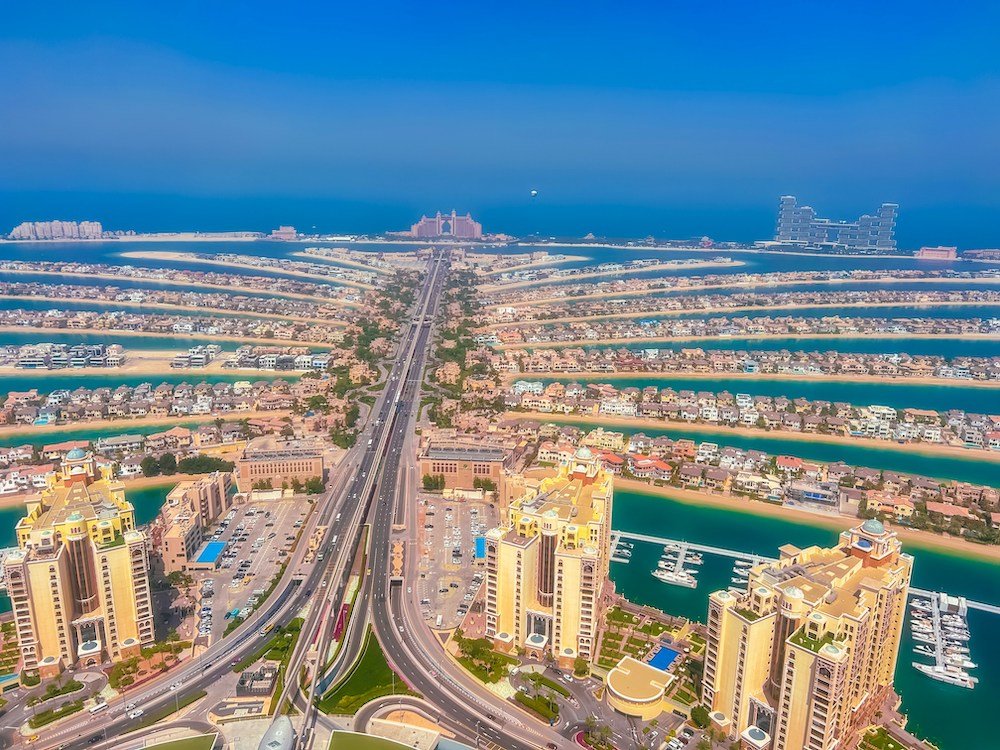
The Palm Jumeirah, an emblem of human ingenuity, stands as one of the most iconic artificial islands in the world, located off the coast of Dubai, UAE.
Conceived in the early 21st century, this architectural and engineering marvel was designed to bolster Dubai’s status as a premier global tourist destination.
Its unique palm-tree shape, visible from space, symbolizes Dubai’s ambition and creative vision in pushing the boundaries of what is possible.
The creation of The Palm Jumeirah was a colossal undertaking, presenting numerous engineering challenges, from ensuring the stability of reclaimed land to safeguarding the marine environment.
Developers employed innovative techniques, including the use of geotextiles to stabilize the sand and protect it from erosion.
The construction involved meticulously placing millions of tons of rock and sand, sourced from the sea, in precise configurations to form the island’s foundation and breakwater.
This project stands as a testament to the possibilities of modern engineering, overcoming the challenges of building on water with groundbreaking solutions.
Today, The Palm Jumeirah is a thriving hub of luxury and leisure, home to opulent hotels, exclusive beachfront villas, and upscale shopping and dining venues.
Attractions like Atlantis, The Palm, a hotel and waterpark, offer entertainment for all ages, while the boardwalk provides breathtaking views of the Dubai skyline.
Its development not only increased Dubai’s shoreline but also created a unique living and leisure space, making it a pivotal addition to the city’s tourism and real estate sectors.
The Palm Jumeirah embodies the vision of artificial islands not just as feats of engineering, but as vibrant communities and tourist destinations, enriching Dubai’s allure on the global stage.
2. The World Islands, Dubai, UAE
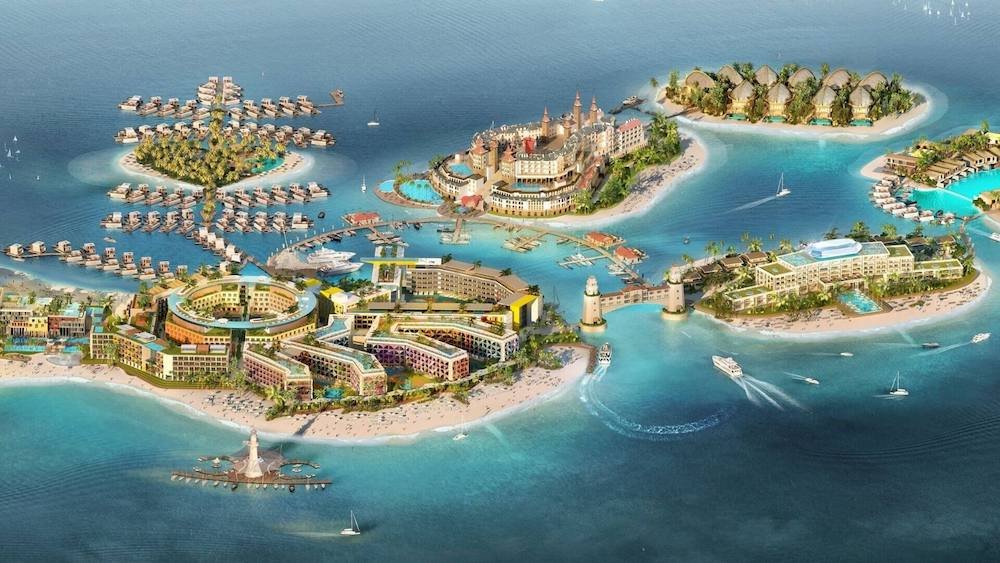
Another visionary project situated off the coast of Dubai, UAE, The World Islands is an audacious attempt at recreating a global map on the waters of the Arabian Gulf.
Launched in 2003, this ambitious project was designed to feature private islands grouped to form the shape of the world’s continents.
The concept behind The World Islands was to offer an exclusive retreat for the wealthy, providing privacy and luxury unmatched anywhere else.
The development process involved extensive dredging and land reclamation, carefully placing millions of tons of sand to sculpt the continents.
This required precise geospatial engineering to ensure accuracy to the world map while also incorporating sustainable practices to protect the marine ecosystem.
Despite the initial rapid development, the financial crisis of 2008 slowed progress, leading to a temporary halt in construction.
Over the years, development has resumed at a more measured pace, with some islands now developed into luxury resorts, private homes, and leisure facilities.
However, a significant portion of The World Islands remains undeveloped, making the status of construction and inhabitation varied.
As of now, the islands that have been developed showcase Dubai’s unparalleled commitment to luxury and innovation, with more promising projects on the horizon aiming to fulfill the original vision of this unique archipelago.
3. Flevopolder, the Netherlands
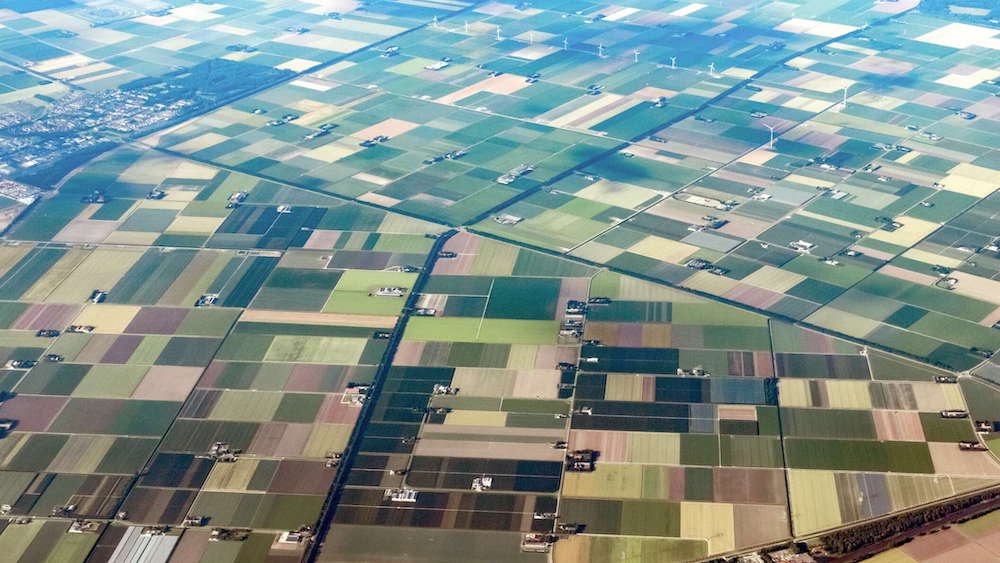
The Flevopolder, situated in the heart of the Netherlands, is not only the largest artificial island in the world but also a testament to Dutch ingenuity in water management.
Its creation was necessitated by a long-standing battle against the sea, aiming to protect inland areas from flooding while addressing the country’s acute land shortage for agriculture and settlement.
The history of Flevopolder is intertwined with the Zuiderzee Works, a monumental project that transformed a part of the Zuiderzee, a saltwater inlet of the North Sea, into freshwater lake IJsselmeer, and subsequently reclaimed land from it during the mid-20th century.
This massive undertaking had profound agricultural and environmental impacts.
The polder’s fertile soil, reclaimed from the sea, has turned into a prime agricultural land, significantly contributing to the Netherlands’ status as one of the world’s top agricultural exporters.
Environmentally, the creation of Flevopolder involved careful planning to ensure the new land’s ecological sustainability, including the establishment of natural habitats and water management systems.
Among its distinctive features, Flevopolder boasts a meticulously planned landscape that includes urban areas, farmland, and nature reserves.
The island is a marvel of modern urban planning, integrating living spaces with nature and agriculture, demonstrating a balance between human habitation and environmental stewardship.
This blend of functionality and sustainability makes Flevopolder a unique example of how artificial islands can serve multiple purposes, from providing necessary land to fostering biodiversity and innovation in agriculture and urban design.
4. Venetian Islands, Miami, USA
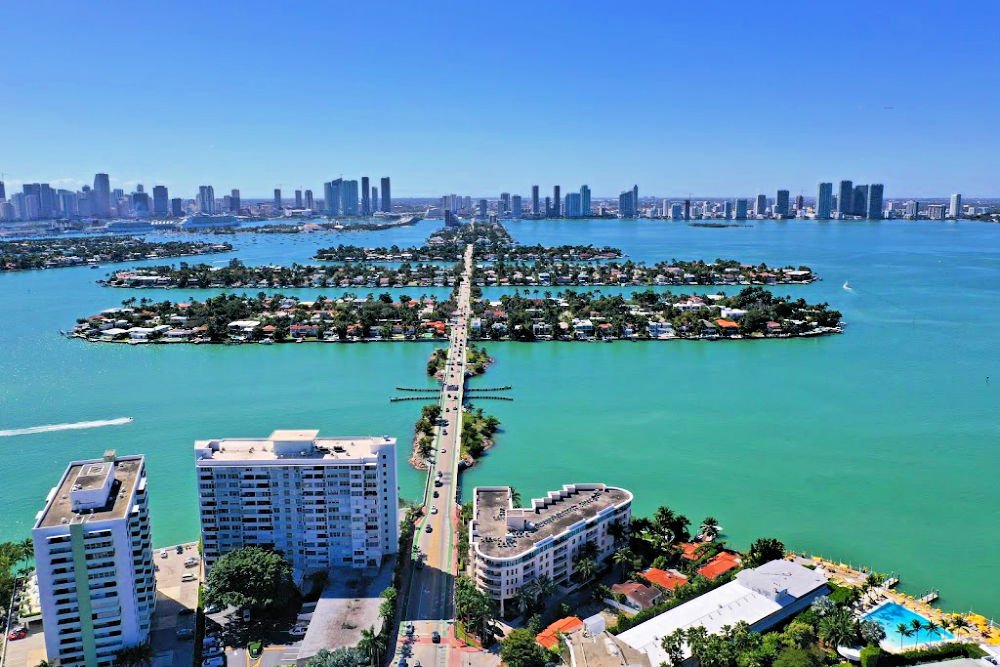
The Venetian Islands in Miami, USA, are a chain of artificial islands in Biscayne Bay, known for their picturesque settings and luxurious lifestyle.
Their origin dates back to the early 20th century, conceived as part of the ambitious plans to connect Miami and Miami Beach via what is now known as the Venetian Causeway.
This development was part of the broader Miami boom era, aimed at attracting tourists and residents alike with the allure of waterfront living and tropical beauty.
The lifestyle on the Venetian Islands epitomizes upscale living, combining serene waterfront views with proximity to Miami’s vibrant cultural and social scenes.
The community here is tight-knit, with residents enjoying a mix of tranquility and the convenience of urban life.
The islands cater to a diverse array of individuals, from families to professionals and retirees, offering a range of amenities and community activities.
Key landmarks and properties on the Venetian Islands include luxurious homes and estates that feature a blend of architectural styles, from modern to Mediterranean.
Notable for their exclusivity and charm, these properties often come with private docks, lush landscapes, and stunning views of the bay and Miami skyline.
The islands also host some historical properties that add to the character and allure of this unique residential area, making it one of the most coveted addresses in Miami.
5. Amwaj Islands, Bahrain
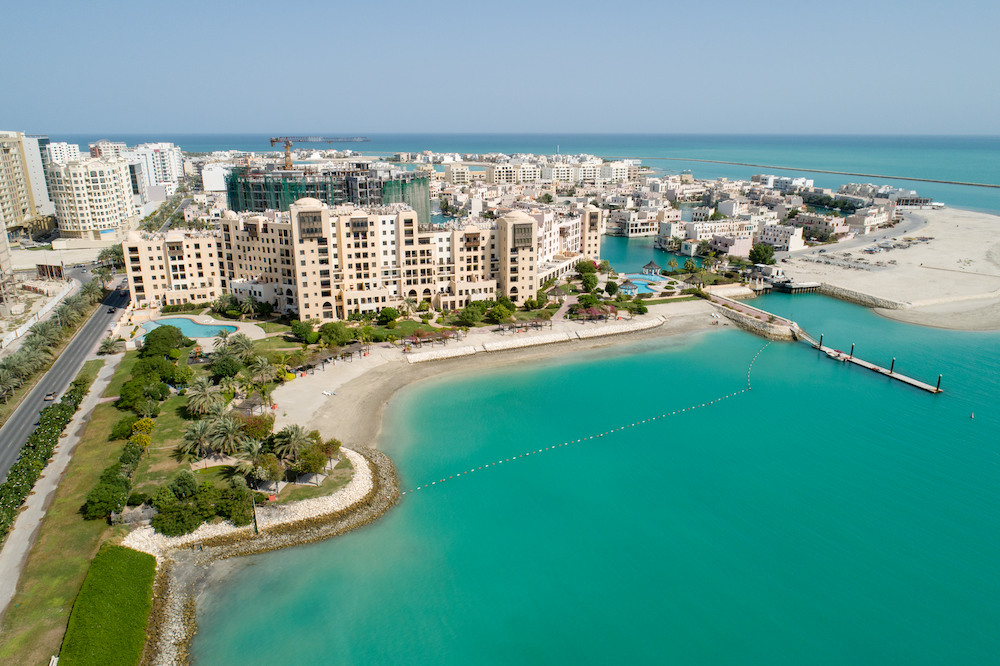
Amwaj Islands in Bahrain represent a pioneering project in the Persian Gulf, showcasing the ambitious concept of creating a series of artificial islands designed for luxury living and tourism.
Launched in the early 2000s, this innovative development was aimed at expanding Bahrain’s coastline and providing additional space for residential, commercial, and recreational purposes.
The islands were meticulously planned to cater to a cosmopolitan community, offering a blend of modern living spaces, business hubs, and leisure facilities.
One of the remarkable aspects of Amwaj Islands is the technological innovations used to combat environmental challenges.
Developers employed advanced land reclamation techniques and implemented sustainable practices to protect marine life and ecosystems.
The use of geo-tubes for coastal defense and the creation of a circular breakwater to reduce erosion are notable examples of how technology was leveraged to ensure the project’s environmental integrity.
Residential and commercial highlights of Amwaj Islands include a variety of housing options, from waterfront villas to high-rise apartments, designed to suit different lifestyles and preferences.
The islands are also home to a vibrant commercial scene, featuring shopping centers, restaurants, and cafes, along with top-notch facilities like international schools and medical centers.
This blend of residential comfort and commercial vitality, coupled with recreational amenities such as marinas and beach clubs, positions Amwaj Islands as a leading example of innovative and sustainable island development in the region.
6. Uros Floating Islands, Lake Titicaca, Peru
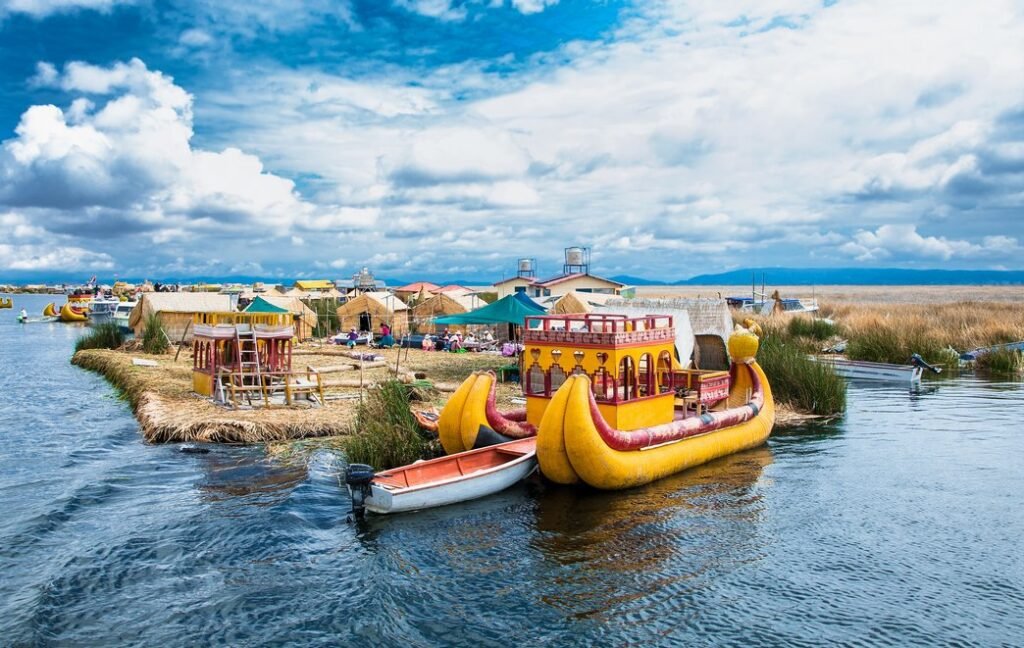
The Uros Floating Islands on Lake Titicaca in Peru are a testament to ancient ingenuity and cultural persistence.
These man-made islands were originally created centuries ago by the Uros people, who sought refuge from more aggressive neighboring tribes.
By constructing these islands from the totora reeds that grow abundantly in the shallow parts of the lake, they created not just homes but a unique way of life that has survived to this day.
The construction of these islands and their structures, including homes, boats, and even watchtowers, relies on the traditional methods passed down through generations.
The buoyant totora reeds are woven together to form the islands’ base, which is anchored to the lakebed.
This base needs constant maintenance and replenishment as the bottom layers rot away, demonstrating a sustainable living practice deeply connected to their environment.
The Uros people’s way of life, deeply intertwined with the totora reeds, holds significant cultural significance.
These islands are not merely a place of residence but a living expression of ancient traditions and a testament to the Uros’ resilience and ingenuity.
However, modern challenges, including the impacts of climate change, tourism, and the encroachment of modernity, threaten their traditional lifestyle.
The community has made efforts to preserve their heritage while adapting to these changes, striking a balance between welcoming tourists to share in their unique culture and maintaining their traditional values.
Tourism has become a vital part of the local economy, providing the Uros people with a source of income while also raising awareness about their way of life and the environmental challenges they face.
Visitors to the Uros Floating Islands are offered a glimpse into a distinctive culture that has adapted to its environment in remarkable ways, ensuring that their heritage remains vibrant and relevant in the modern world.
7. The Pearl-Qatar, Doha, Qatar
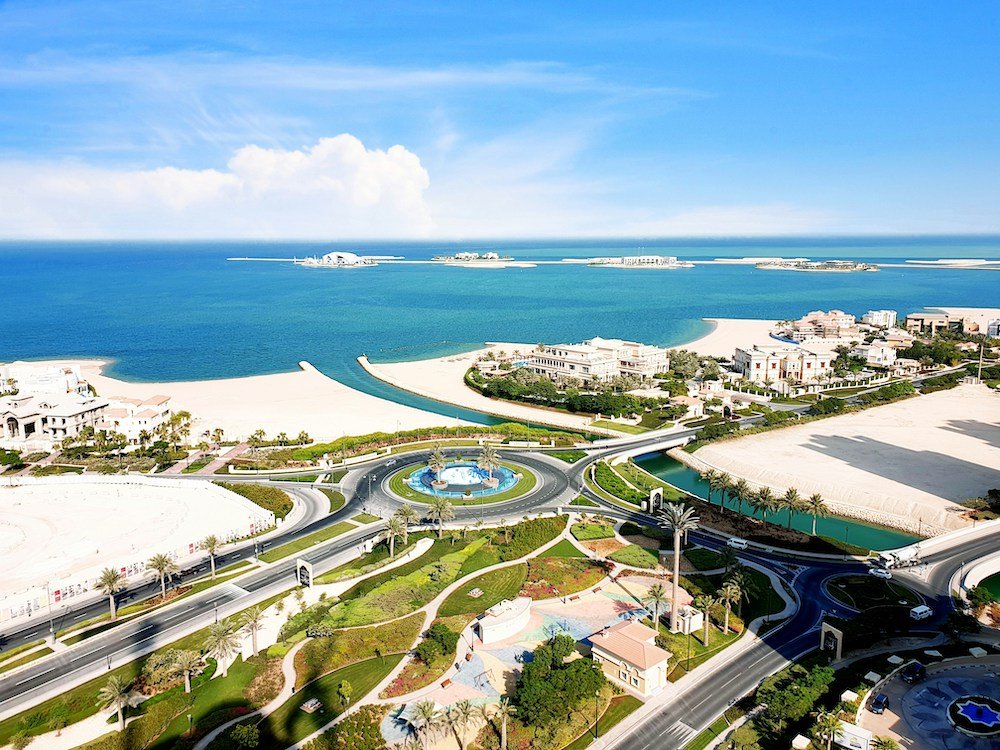
The Pearl-Qatar in Doha represents the epitome of luxury living and architectural innovation, envisioned as an opulent residential enclave that would attract international residents and investors to Qatar.
This man-made island, covering nearly four square kilometers, was designed to embody the nation’s aspirations towards luxury and exclusivity, drawing inspiration from the rich cultural heritage of the region and the allure of the Mediterranean lifestyle.
Architectural and cultural highlights of The Pearl-Qatar include its Riviera-style marinas, high-end boutiques, and residential districts that mimic various architectural styles from around the world, such as Venice, the Mediterranean, and the Arab world.
This blend of designs creates a cosmopolitan atmosphere that celebrates global cultures while maintaining a distinctly Qatari identity.
The economic significance of The Pearl-Qatar cannot be overstated. It has played a pivotal role in diversifying Qatar’s economy beyond oil and gas, positioning the country as a destination for luxury tourism and international real estate investment.
The island also fosters a vibrant community life, with its residential areas, schools, hospitals, and community centers offering a self-sufficient lifestyle.
This has made The Pearl-Qatar not just a symbol of Qatar’s economic ambitions but also a dynamic living space that contributes to the country’s social fabric.
8. Forest City, Johor, Malaysia
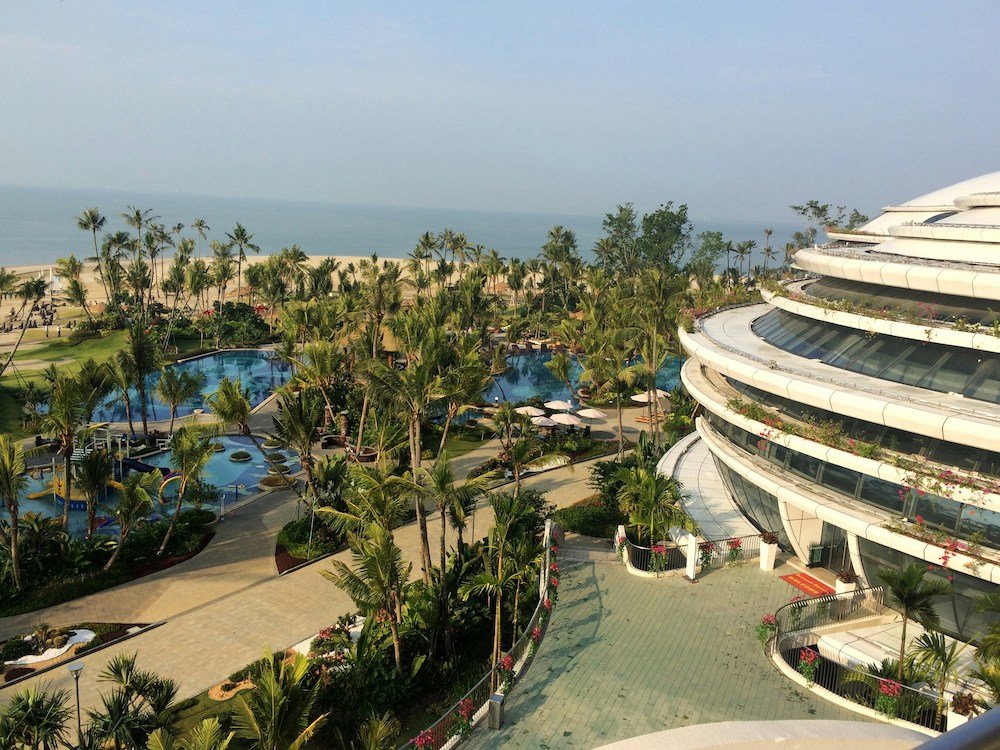
Forest City in Johor, Malaysia, is a groundbreaking project that reimagines urban living through the lens of sustainability and green technology.
Conceived as a futuristic city, its vision is to create a harmonious environment where nature and urban life coexist seamlessly.
This ambitious development is designed to be a model of sustainable living, featuring green buildings, renewable energy sources, vertical gardens, and extensive green spaces to mitigate urban heat and promote biodiversity.
Balancing the ambitious development with environmental conservation has been a significant challenge.
The project has faced scrutiny regarding its impact on local ecosystems, particularly the marine habitats surrounding the site.
Efforts have been made to address these concerns through comprehensive environmental assessments and the incorporation of eco-friendly construction practices and technologies designed to minimize the ecological footprint.
The current status of Forest City reflects growing international interest, attracting investments and residents from around the globe drawn to its vision of sustainable and innovative living.
Despite the challenges, the project continues to evolve, with ongoing development aimed at realizing its full potential as a green urban paradise.
As Forest City matures, it promises to be a benchmark for future developments worldwide, showcasing how cities can grow in harmony with their natural surroundings.
9. Hulhumalé, Maldives

Hulhumalé, an artificial island in the Maldives, was conceptualized out of necessity to accommodate the country’s burgeoning population and expanding tourism sector.
With the Maldives’ natural islands limited in size and threatened by rising sea levels, Hulhumalé represents a strategic endeavor to create new land for development, while aiming to alleviate the pressure on Malé, the densely populated capital city.
This expansion is crucial for sustaining the country’s economic growth and providing much-needed residential space.
From its inception, environmental considerations have been paramount in Hulhumalé’s design and construction.
The project incorporates sustainable urban planning practices, including the use of renewable energy sources, water conservation measures, and green spaces to ensure an eco-friendly development.
Efforts have also been made to protect the surrounding marine ecosystem during construction, showcasing a commitment to balancing human needs with environmental stewardship.
Hulhumalé has made significant contributions to the Maldivian economy, particularly through housing and tourism.
By offering affordable housing options, it has become a new home for thousands, alleviating the overcrowding issues in Malé.
The island is also poised to become a key player in the tourism industry, with plans for luxury resorts and attractions that aim to diversify the Maldives’ tourism offerings.
This blend of residential and commercial development underscores Hulhumalé’s role in shaping the future of the Maldives, offering a model for sustainable expansion in vulnerable island nations.
10. Yas Island, Abu Dhabi, UAE
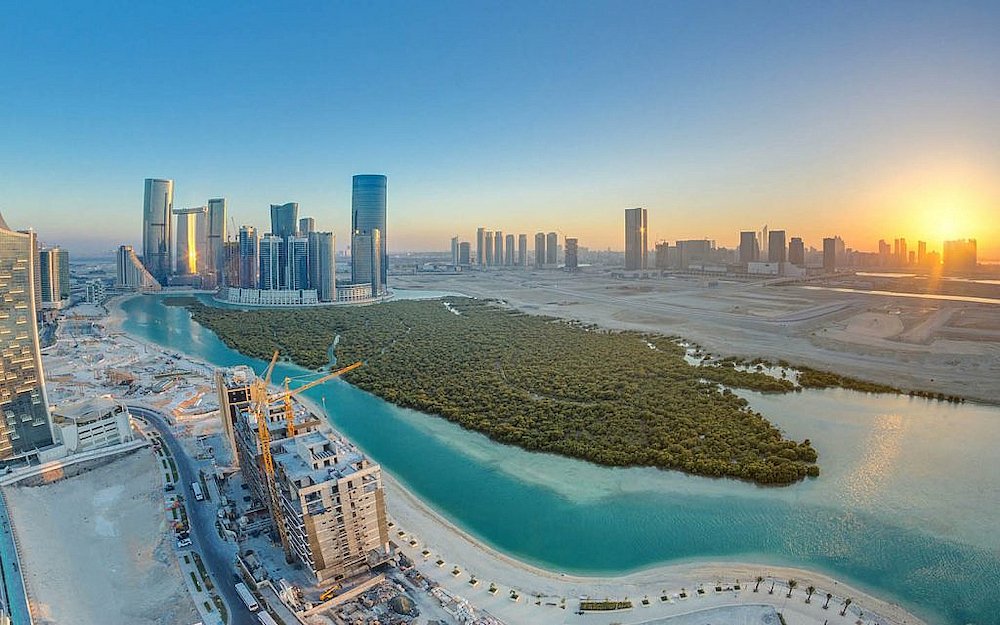
Yas Island has undergone a remarkable transformation, emerging as a global entertainment destination within Abu Dhabi, UAE.
Originally a natural island, its development into a leisure and entertainment hub was part of Abu Dhabi’s strategic plan to diversify its economy and enhance its tourism sector.
Today, Yas Island is synonymous with world-class attractions, events, and hospitality, drawing visitors from around the globe.
Key attractions on Yas Island include the Yas Marina Circuit, host to the annual Formula 1 Abu Dhabi Grand Prix, which has placed the island on the international sports map.
Additionally, the island boasts major entertainment venues like Ferrari World Abu Dhabi, Yas Waterworld, and Warner Bros.
World Abu Dhabi, offering a range of experiences from thrilling rides to family-friendly adventures.
The Yas Mall and a variety of dining and nightlife options complement these attractions, ensuring a comprehensive visitor experience.
The impact of Yas Island on Abu Dhabi’s tourism and economy has been profound.
It has not only boosted the emirate’s international profile but also significantly contributed to the local economy through tourism revenues and job creation.
Yas Island’s success as a multi-faceted entertainment destination reflects Abu Dhabi’s ambition and commitment to becoming a leading global tourism destination, enhancing the emirate’s appeal to international tourists and investors alike.
11. Thilafushi, Maldives
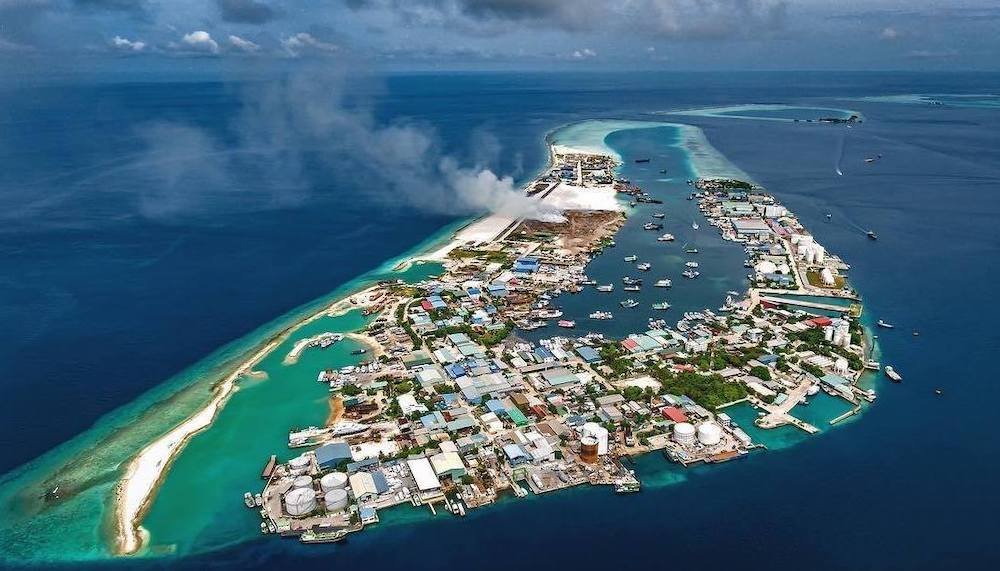
Thilafushi, often referred to as “Rubbish Island,” represents a stark contrast to the pristine natural beauty associated with the Maldives.
Originally a lagoon, Thilafushi was transformed into an industrial island in the early 1990s to address the growing waste management challenges in Malé and the surrounding resort islands.
This transformation was driven by the urgent need for a centralized waste disposal site, showcasing an innovative yet controversial approach to waste management in an island nation.
Environmental concerns on Thilafushi have been significant, with issues arising from the unregulated dumping of waste leading to pollution and potential harm to the surrounding marine ecosystem.
Recognizing these challenges, the Maldivian government and international organizations have initiated efforts to improve waste management practices on the island.
These include implementing more sustainable waste processing methods and attempting to mitigate the environmental impact through the development of recycling facilities and controlled waste treatment systems.
Despite its environmental challenges, Thilafushi plays a crucial economic role in the Maldives.
Apart from waste management, the island hosts a range of industrial activities, including boat manufacturing, cement packing, and other enterprises.
These industries are vital for the local economy, providing employment opportunities and supporting the economic diversification of the Maldives.
Thilafushi’s development into an industrial hub underscores the complex balance between environmental stewardship and economic necessity in island nations.
12. Neeltje Jans, the Netherlands

Neeltje Jans is a testament to the Netherlands’ advanced approach to water management and flood protection.
Initially constructed as part of the Delta Works project, one of the most sophisticated and comprehensive flood defense systems in the world, Neeltje Jans served as a crucial base for the construction of the Oosterscheldekering, a storm surge barrier designed to protect the Dutch coastline from high tides and storm surges.
The island represents a pivotal element in the Netherlands’ ongoing battle against the sea, showcasing the country’s engineering prowess and proactive measures in safeguarding its land and people.
Today, Neeltje Jans has evolved beyond its initial engineering and protective role to become a popular tourist attraction and an educational resource.
It hosts the Delta Expo, which provides visitors with insights into the Delta Works project, the challenges of water management, and the innovative solutions developed to combat these issues.
Attractions include guided tours, exhibitions, and interactive displays that explain the significance of flood protection and environmental sustainability in the Netherlands.
Furthermore, Neeltje Jans offers environmental and engineering insights, highlighting the delicate balance between human intervention and nature conservation.
The construction of the storm surge barrier, designed to allow the free flow of water and migration of sea life, exemplifies this balance.
Neeltje Jans not only underscores the Netherlands’ mastery over water management but also serves as a global benchmark in combining flood protection with environmental sensitivity and tourism.
Conclusion
The exploration of the world’s most fascinating artificial islands reveals a remarkable tapestry of human ingenuity, architectural innovation, and environmental stewardship.
From the luxurious expanses of The Palm Jumeirah and The Pearl-Qatar to the cultural and historical richness of the Uros Floating Islands, each artificial island serves a unique purpose, whether it be for luxury living, tourism, agricultural development, or environmental protection.
These islands are not just feats of engineering; they are living, breathing communities that showcase the potential for harmonious coexistence between humanity and the natural world.
The engineering marvels behind these islands underscore a profound capacity for problem-solving and creativity, addressing challenges such as rising sea levels, land scarcity, and environmental degradation.
Moreover, the environmental considerations embedded in the development of places like Hulhumalé and Neeltje Jans reflect a growing awareness of the importance of sustainable practices.
Looking to the future, the development of artificial islands stands at a crossroads between innovation and conservation.
As we continue to push the boundaries of what is possible, the lessons learned from these islands will undoubtedly inform future projects, balancing human ambitions with the imperative to preserve our planet for generations to come.

FAQ’s About Artificial Islands:
Can you artificially make an island?
Yes, you can artificially create an island.
This is typically done through land reclamation, where material (usually sand, rock, or earth) is piled up until it rises above the water surface, or by floating structures that are anchored to the seabed.
These methods have been employed to create new land for various purposes, including residential development, commercial projects, tourism, and infrastructure like airports.
Is there any artificial islands?
There are numerous artificial islands around the world, ranging from small structures to extensive developments.
Examples include The Palm Jumeirah in Dubai, the Uros Floating Islands in Peru, and Flevopolder in the Netherlands.
These islands serve various functions, from housing and tourism to agriculture and environmental protection.
Can islands be constructed artificially?
Yes, islands can and have been constructed artificially using various techniques.
The most common method involves dredging sand, earth, and rock and depositing it in a desired location until it breaks the water’s surface.
Another method involves creating floating platforms that are anchored to the seafloor.
These techniques have been used worldwide for different purposes, including expanding living space, commercial development, and environmental projects.
What are the three largest artificial islands?
The three largest artificial islands, based on their size and scale of development, are:
- Flevopolder, the Netherlands – The largest artificial island created as part of the Zuiderzee Works, primarily for agricultural land and to control flood risk.
- Palm Jumeirah, Dubai, UAE – One of the largest man-made islands, known for its palm-tree shape and luxury residential, leisure, and tourism developments.
- Yas Island, Abu Dhabi, UAE – A large artificial island that hosts a Formula 1 circuit, water parks, shopping malls, and entertainment venues.
Are man-made islands safe?
Man-made islands are generally safe if they are designed and constructed properly, taking into account environmental factors, structural stability, and the potential impact of natural disasters like storms and sea-level rise.
Advanced engineering techniques and continuous maintenance play crucial roles in ensuring the safety and durability of these islands.
Are artificial islands bad for the environment?
Artificial islands can have both positive and negative environmental impacts.
The construction process can disrupt marine ecosystems, affect water quality, and lead to habitat loss.
However, some projects incorporate environmental safeguards, such as creating new habitats for wildlife or using sustainable materials and construction practices.
The overall environmental impact depends on the planning, execution, and management of the artificial island project.
Which country has the most artificial islands?
The United Arab Emirates, specifically Dubai, is renowned for its ambitious artificial island projects, including The Palm Jumeirah, The World Islands, and Palm Jebel Ali.
These iconic developments have positioned the UAE as a leader in creating large-scale artificial islands for residential, leisure, and tourism purposes.
How deep can an artificial island be?
The “depth” of an artificial island, referring to the foundation below sea level, varies depending on the construction method and the seabed’s characteristics.
For islands created by land reclamation, the depth can range from several meters to tens of meters below sea level, depending on the need for stability and to counteract erosion.
Floating islands are anchored at varying depths, tailored to the local marine environment and the structure’s design requirements.
What are the disadvantages of artificial islands?
Disadvantages of artificial islands include high construction and maintenance costs, potential environmental damage, and the challenge of ensuring long-term stability and sustainability.
Other concerns involve disrupting marine ecosystems, contributing to sediment displacement and water turbidity, and the risk of exacerbating coastal erosion.
Do artificial islands float?
Most artificial islands are fixed structures created by land reclamation and do not float.
However, there are examples of floating islands, such as the Uros Islands in Peru, which are made from buoyant totora reeds.
Some modern projects explore the concept of large-scale floating platforms for residential or commercial use, anchored to the seabed but essentially floating above the water.





